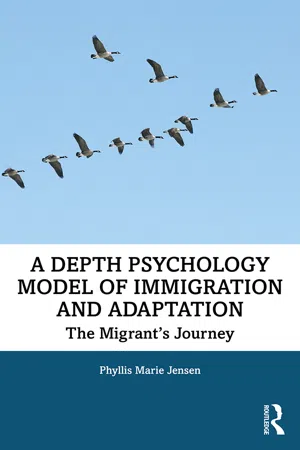Archetypes defined
Swiss psychiatrist/psychoanalyst, Carl Jung, initially defined archetypes as primordial images of basic and universal experiences of life comparable to Plato’s Ideals, “Kant’s a priori categories, and Schopenhauer’s prototypes that link body and psyche, instinct and image.”1 Later archetypes are described as innate structures of perception that link body, mind, psyche, instinct and image2,3,4,5,6 visible in myths, arts and dreams.7 Archetypes are instincts of the collective unconscious,8 our inherited psyche that patterns and influences our personal unconscious of perception and experience. The direct experience of an archetype is overwhelming and numinous, an awesome, peak experience never fully understood nor integrated,9 and the essence of religious belief.10
Everyone also has the potential for numinous, transcendent archetypal experiences of land with the power to enlighten and transform psyche.11 Forester Rowe tells of a repeated childhood numinous dream of land that he then stumbled upon as an adult in uncharted territory and is now protected: Riding Mountain National Park.12 Space is integral to land and psyche.13 Historically, tribes established themselves in a territory that became their ancestral land and with the help and blessings of gods or spirits, it became a sacred place:14 “When land is local, bounded, and personal, it becomes a place. We have experiences in places, build memories of them, and become emotionally attached to them.”15
All of us hold an imprinted archetype of home and land. Initially, imprinting or psychic stamping was thought to be rapid and restricted to a critical early period of life. Now imprinting is perceived as a cumulative process, deepening with experience and accompanied by positive feelings with the release of endorphins (feel-good hormones)16 that give a sense of connectedness. We are imprinted with the land of our origin, that becomes a personal experience of the archetype of land. There is too an unconscious ideal of land, known as “Arcadia.” Art studies report landscapes as the universally preferred subject, especially Arcadian bluish scenes with trees, water, humans and animals.17
In classical Greek mythology, Gaia, goddess of the land represents fertility and nourishment necessary for survival: she arouses feelings of awe and devotion. The dark side of Gaia is the Hindu goddess Kali, the Terrible Mother representing hidden, as well as dark and destructive forces: fire, flood, earthquake and wind.18 Jung speaks of the earth having a soul and the spirit of the land living in us. Our present danger, he cautions, is alienation from nature and not honouring our inner nature. He advises spending time in nature and connecting with the soul of the earth.19 Likewise Thoreau, in Walden offers wilderness as a prescription for the discontents of civilization.20 Studies of “Japanese forest bathing” show that phytocides—essential oils emitted by trees and plants as protection from microbes and insects—have significant benefits for humans. They improve immune function, lower heart rate and blood pressure, reduce stress hormones and promote general feelings of well-being.21,22
The archetype of migration
The migration archetype is experienced as a strong desire to leave. Often this desire arises with growing awareness of disparities between one’s needs and interests and the deficiencies of home. An inner stress is relieved when imagining different worlds that then diminish the importance of attachments and feelings of loyalty to home. Peterson recalls growing up with migration as the norm for youth, the expected next step. As early as age 12, he remembers wanting to leave home.23 The desire and decision to migrate arises from a “complex interplay of intra-psychic and socio-economic factors”:24 “We now know from ancient DNA that the people who live in a particular place today almost never exclusively descended from the people who lived in the same place far in the past.”25
In anticipation of leaving, migrants create “mental maps” full of projections and expectations that often differ from reality.26 These mental maps guide decision making which is often “intendedly [sic] rational, rather than actually so.”27 Intent to migrate, to be realized, requires “access to economic, social and human capital.”28 Youth may migrate for studies, along with an embedded “psychological need to separate from their parents, to prove their independence and coming-of-age and to satisfy their curiosity,”29 and many countries issue youth work-travel and study visas.30
In early migration studies, typically migration was portrayed in a “deficiency” model—social/economic/political deficiencies in the homeland versus ideal images of newlands and the personal desire for better situations.31 Voluntary migrants32 with papers to cross borders, legally enter another country though the “front door,” while those without papers are known as “backdoor” migrants. Generally, these are not the desperately poor: to leave requires resources. Many backdoor migrants are ambitious, educated, urban-based and motivated by persistent generalized violence. Because of local chaos and/or power politics, they are unable to secure border-crossing papers and without these, for example in the Mediterranean, they cannot book passage on ferries.33 Backdoor migration is more expensive than regular transport, costing a minimum of $2,000 to board overcrowded, unseaworthy vessels.34 The Central American walking “caravan” to the United States is different: “They say they are fleeing persecution, poverty and violence in their ...
